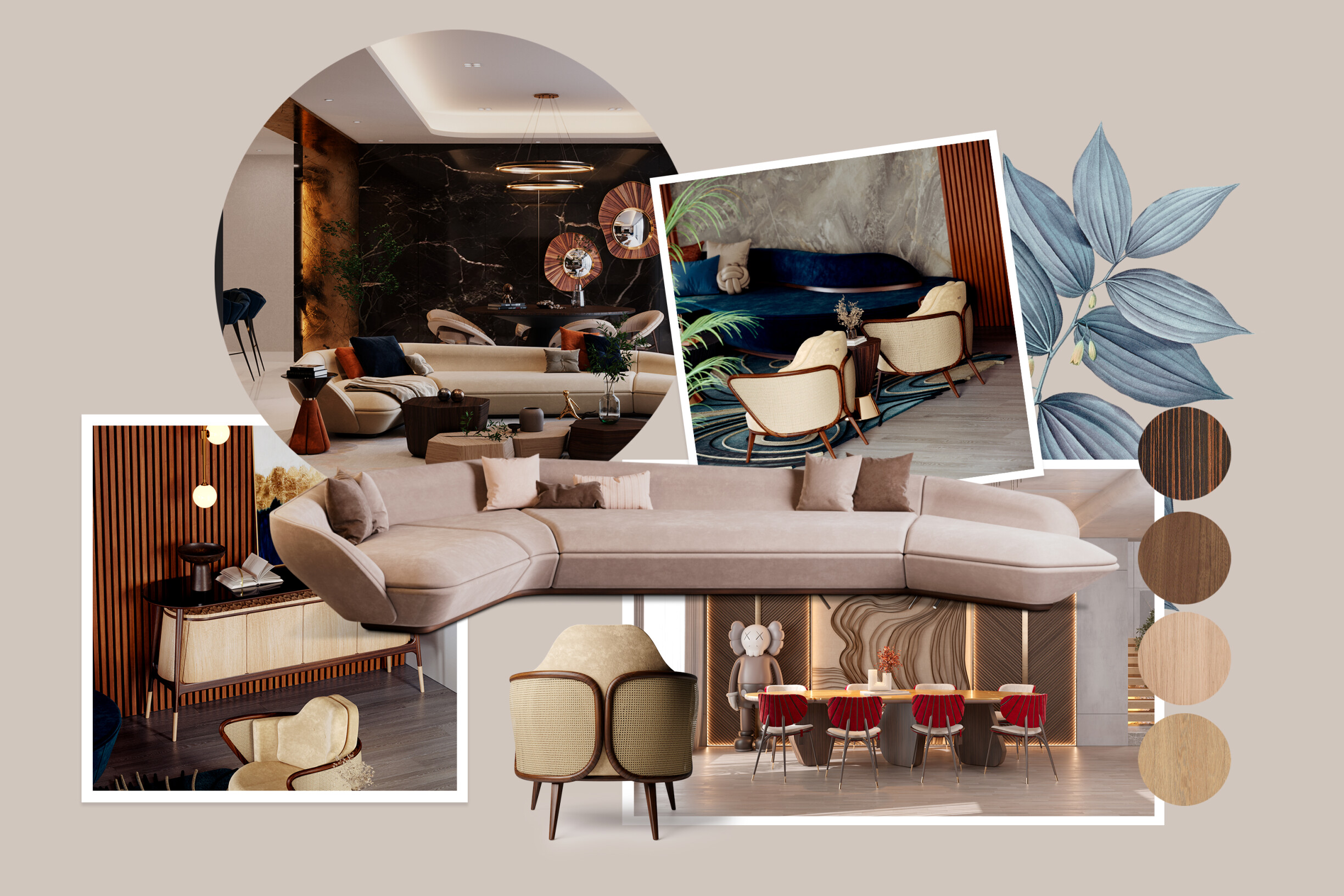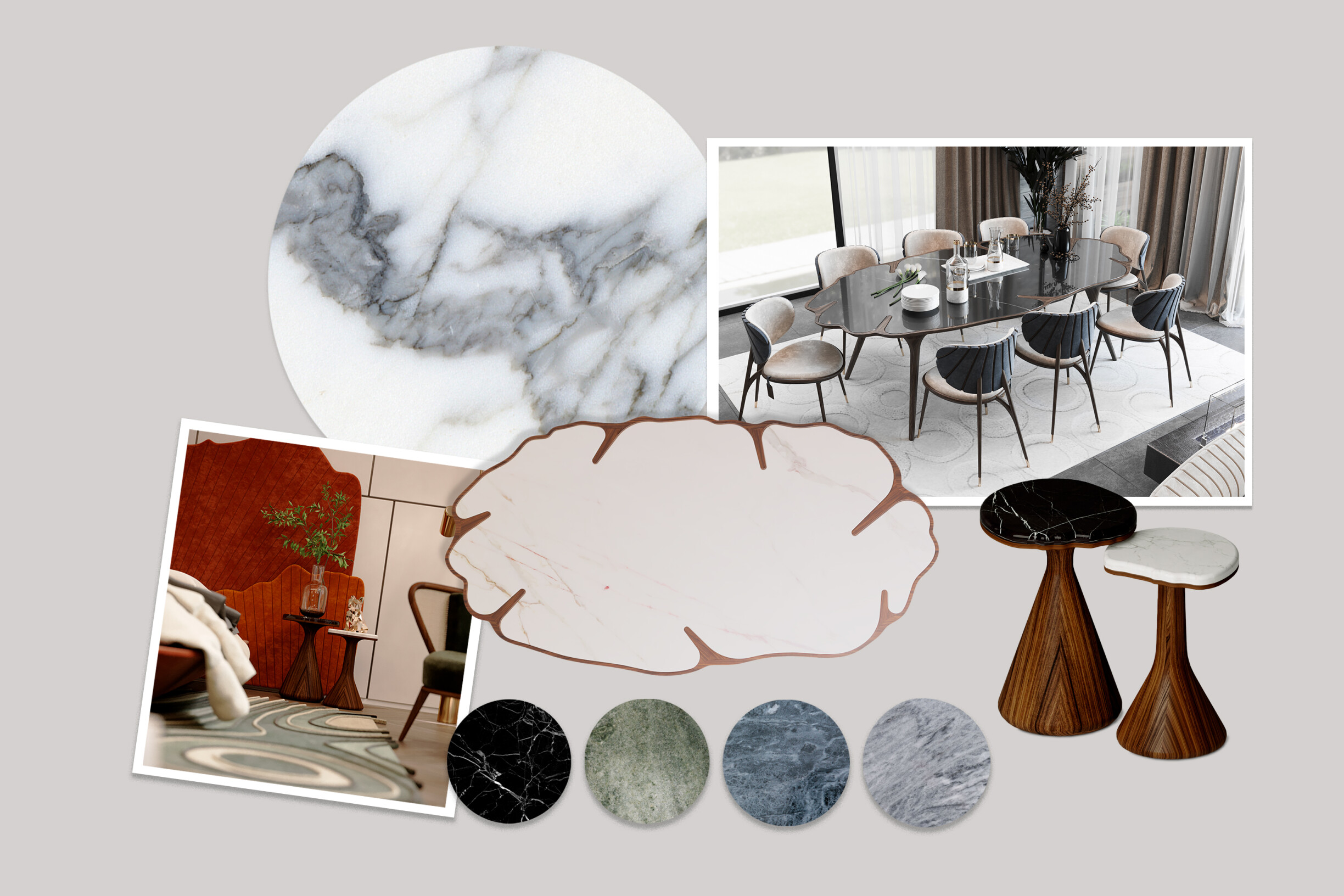For a non-specialist, the role of an interior designer may involve defining a decorative style and choosing the colors of furniture and decoration. But it's much more than that. An interior designer has in his hands the art of transforming spaces into rooms that suit the style and needs of their inhabitants. To achieve this, there are many factors and elements to consider, but one of the most important is materials.
We're talking about more than just choosing between stone, marble or more sustainable materials. Careful selection of materials can make a difference in creating genuinely exceptional spaces.
"The magic of design lies in the selection of materials. They can elevate a space from ordinary to extraordinary."
Vicente Wolf, American interior designer
Let's find out how a careful selection of materials can make a difference in your interior design projects.

Materials play a central role in the creation and experience of interior design spaces in many ways.
Firstly, it is worth mentioning the comfort and functionality of the space. For example, using soft rugs can make a living room more comfortable.
When discussing materials, we also talk about acoustic and thermal insulation. The materials allow to control the acoustics of a space, reducing unwanted noise, providing thermal comfort, saving energy, and ensuring well-being. For example, carpets are essential for absorbing sound, while hardwood floors do not provide adequate sound insulation.
Another reason that makes materials fundamental in interior design is safety. The choice should be on fire-resistant and non-toxic materials.
One of the factors that customers value is the ease of maintenance and durability, since materials that require constant maintenance and are of low quality can be inconvenient and costly for the customer.
Finally, it is essential to discuss aesthetics and personality in creating a space with identity. Materials are like the words in a story or the “notes in a song”, as the British interior designer Tara Bernerd said. The materials create the narrative and identity of the space, reflecting its personality and purpose. They are fundamental to the aesthetics of a space. The selection of wall coverings, flooring, furniture, fabrics and decorative pieces contributes to the visual identity of the space, as different materials can convey different styles and atmospheres, allowing the designer to personalize the space according to the client's preferences.


As we have already seen, materials play a central role in determining the look and feel of a room, affecting the visual and emotional perception of spaces in many ways. In what way?
Materials contribute to the color palette and textures of a room. The choice of materials, such as marble, wood, metal, glass, or ceramic, among others, defines the colors and textured surfaces of the space, creating a unique visual experience.
Materials are essential for expressing the decorative style and theme of the project. For example, the use of wood and stone evokes a feeling of rusticity and warmth, while metallic surfaces and glass are associated with a more contemporary style.
Combining different materials allows to create visual contrast or harmonize design elements. Choosing materials complementing or contrasting each other can make an attractive visual impact.
The choice of materials can influence the perception of the size and scale of a space. Oversized materials can make a room feel larger, while smaller materials can create a feeling of intimacy.
There are materials, such as soft fabrics, plush carpets, or upholstered sofas, that contribute to a feeling of comfort and warmth, making it more welcoming.
In addition to visual appearance, the tactile feel of materials also plays an important role in aesthetics. The texture of materials, such as smoothness or roughness, can be physically perceived, enriching the sensorial experience. In fact, as we explain in this blog article about the influence of texture in interior design, this is an element that can profoundly affect how we perceive, experience, interact, and experience a space.
The most unusual and unique materials can add originality and uniqueness to a space, making it stand out.
It is essential, as an interior designer or architect, that you consider not only the visual beauty of materials but also the sensations and emotions they evoke to create visually attractive and emotionally impactful spaces.
Each material has its own distinct characteristics and specific applications. There are 5 materials that we recommend knowing for any interior design project:
Wood is one of the most versatile and appreciated materials in architecture, construction, and interior decoration. Its natural beauty, durability, texture, and ability to adapt to various styles make it a popular and timeless choice.
Wood is available in various species, each with unique characteristics. Each species offers different colors, textures, and patterns. Furthermore, it can be used in multiple applications, from flooring, wall coverings, ceilings, furniture, or decorative elements.
This is one of our favorite materials at ALMA de LUCE, whether as a footer for a sofa such as Antelope Canyon, in the legs of the Metamorphosis armchair, in the top base and legs of a dining table as the Anta da Arca, or a sideboard, such as At-Turaif.
Architects and designers are drawn to the inherent beauty of wooden furniture, as it effortlessly infuses spaces with a sense of comfort, serenity, and sophistication, as explained in this blog article about the elegance of wooden furniture. Some of its main features are:
Naturally welcoming
Often appreciated the tactile sensation
Durability and longevity
Relatively simple maintenance
Compatibility with other materials such as glass, metal, and stone
Possibility of customization

Marble is a luxurious, timeless, and highly valued material. Its beauty and versatility make it a popular choice for various interior design project applications.
The natural beauty of marble, its color variations, vein patterns and unique textures create an unparalleled visual appeal. Each piece of marble is unique. Furthermore, marble can have different applications: a side table like Ginkgo from ALMA de LUCE or a dining table like Korowai from ALMA de LUCE. A marble dining table can take a dining space to the next level, adding elegance and luxury to the decor, as shown in this article from our blog about Marble Dining Tables.

It is a clay-based material fired at high temperatures to create tiles, decorative pottery, or kitchen utensils. It is valued for its resistance, versatility, and variety of colors, patterns, and textures. Therefore, it allows a series of applications.
From covering floors to walls, whether in kitchens, bathrooms, or living rooms, on a fireplace, or as a decorative element, ceramics are suitable for interior or exterior design projects. Its main advantage is that it resists wear, stains, humidity, and impact, making it a practical choice for areas of greater use. Furthermore, it is easy to clean and maintain.
For example, one of our excellent pieces, the pedestal table Cardosas, that is on display in the InterContinental 5-star hotel’s lobby, has a detail in ceramic: flowers and leaves in Ceramic of Limoges, known for its dazzling white, luminous hue and the intricacy of its hand-painted decorations.

Sustainable materials in interior design projects are increasingly an option. These materials not only contribute to the space, but they also create healthier and more conscious projects. Some materials have become popular in this context:
Bamboo: can be used in flooring, furniture, wall panels and accessories;
Ecological coatings: in this context, paints without VOC (volatile organic compounds) and wallpaper with environmental certification stand out, which promote indoor air quality;
Sustainable and organic fabrics, such as cotton and linen;
Cork: natural, recyclable and renewable material;
Recycled materials, such as demolition wood, metal or glass;

"Materials in a project are like the notes in a song. The right combination creates a melody that resonates with the soul."
Tara Bernerd, interior designer
Materials play a fundamental role in interior design, affecting the aesthetics, functionality, comfort, and sustainability of spaces. By carefully selecting materials for a project, you will be creating areas that not only impress visually but also meet the practical and ethical needs of your clients.
Did you like our tips? So, stay tuned to our blog for more information and curiosities from the universe of architecture, interiors, and construction! You can also follow us on Instagram, Facebook, and Pinterest for all updates and news.